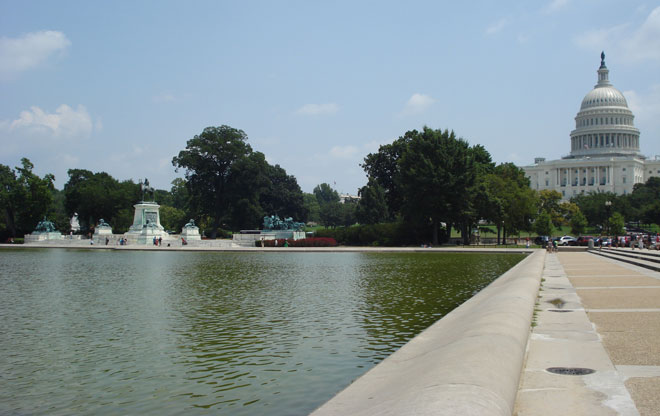
View of the Ulysses S. Grant Memorial
One of the notable features on the east side of the reflecting pool is a sculptural memorial honoring Civil War General and U.S. President Ulysses S. Grant. The sculpture, one of the largest equestrian sculptures in the world, was created over a period of twenty years by sculptor Henry Merwin Shrady and architect William Pearce Casey.
Image: Liz Guthrie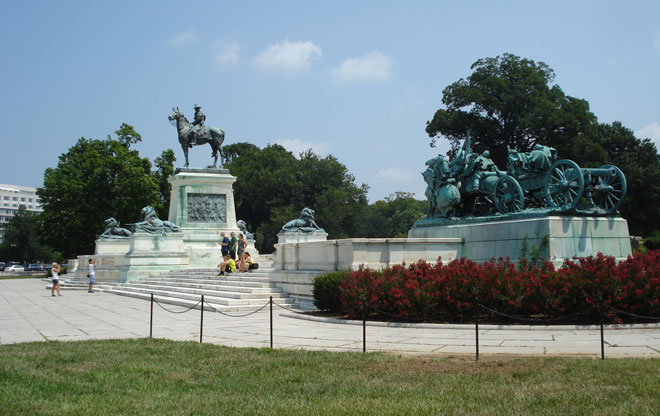
Entering the Memorial
Dedicated in 1922, the memorial consists of a large bronze statue of Grant mounted on his war horse, set on a marble pedestal, and guarded by four lions. Sculpture groups of the Cavalry and Artillery flank Grant to the north and south, respectively.
Image: Liz Guthrie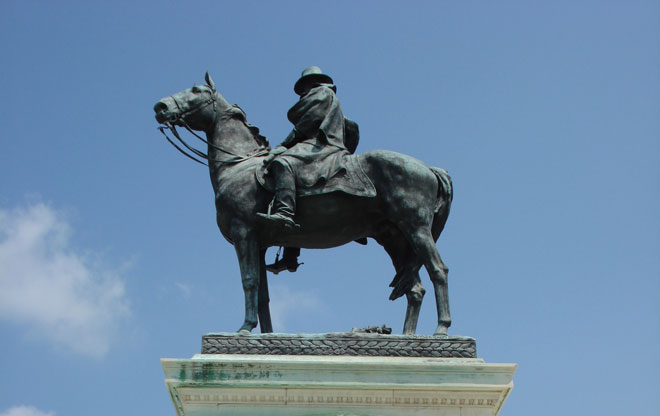
Grant & Cincinnati
The base of sculpture is made of Vermont marble. Infantry panels and sculpture of Grant atop his horse, Cinicinnati, are cast in bronze.
Image: Liz Guthrie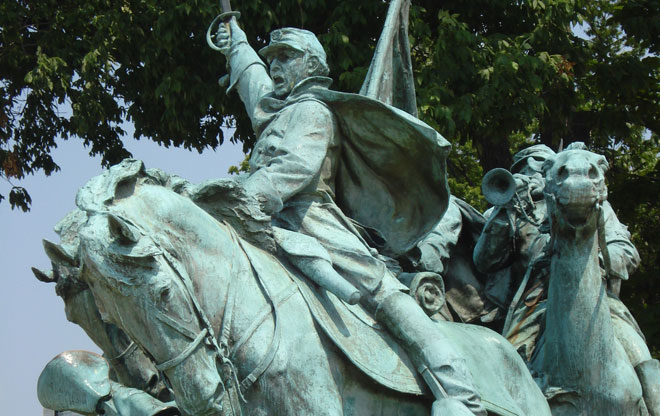
Leading the Cavalry Charge
Image: Liz Guthrie
War Horses
A dramatic shot from the Artillery section depicts turbulent horses charging forward.
Image: Liz Guthrie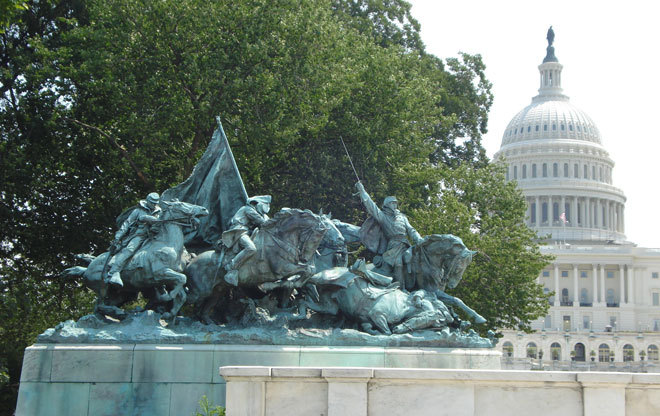
Cavalry Group Heading into Battle
These dramatic sculptures evoke a sense of attack and turbulence, almost as if they may collide or collapse on each other, which contrast with the calm, unmoving statute of Grant, looking west over the reflecting pool. When viewed from afar, the memorial seems to anchor the foot of the U.S. Capitol as a historical marker of the North-South opposition in the Civil War.
Image: Liz Guthrie
The Caisson
Artillery section depicting a caisson pulled by three horses carrying flag holder and artilleryman.
Image: Liz Guthrie
Four Lions
Four lions surround Grant on smaller pedestals, guarding the U.S. flag and Army flags.
Image: Liz Guthrie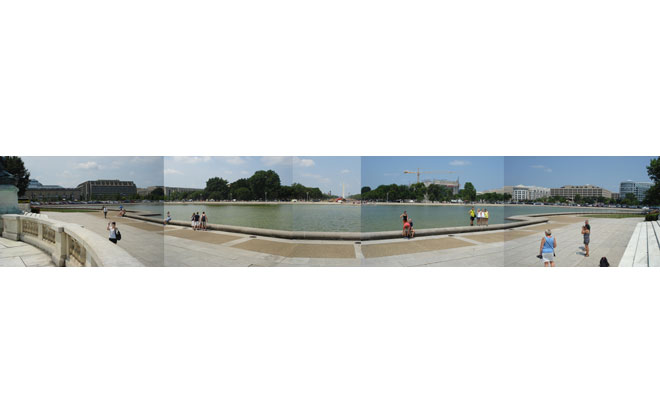
A Panorama View
My impressions leave me feeling that the Capitol Reflecting Pool is less a destination and more like a gap or pause in the three-dimensionality of the National Mall. This void also suggests a sense of ambiguity in its present form. Stay tuned for the redesign…
Image: Liz Guthrie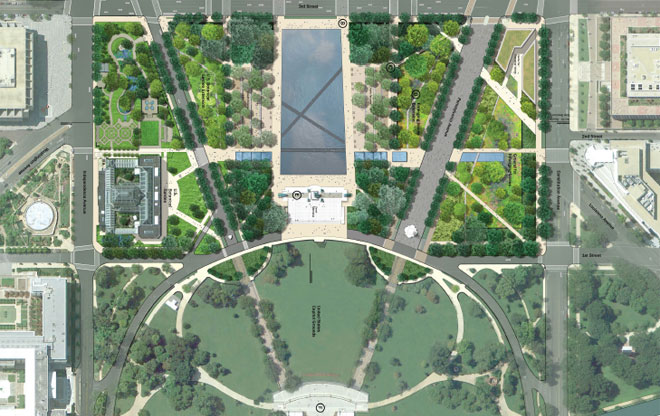
2011 Design Competition
The Trust for the National Mall announced the winners of its design competition. Here, the winning design proposal would add two national gardens on either side to better knit the site into existing pathways to Union Station, the Mall, and Frederick Law Olmsted, Jr.’s undulating Capitol Hill grounds. A smaller reflecting pool, which could drain to become a stage for events, would line up with the central axis of the Mall.
Image: Davis Bond Broy and Gustafson Guthrie Nichol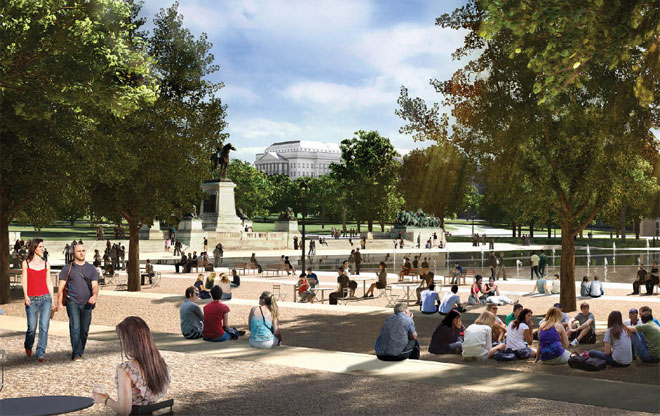
2011 Design Competition
The winning design would also create a set of terraces that would lead visitors down to cascading fountains and the revamped reflecting pool. These terraces set within new gardens would sub-divide the space and also enhance security.
Image: Davis Bond Broy and Gustafson Guthrie Nichol